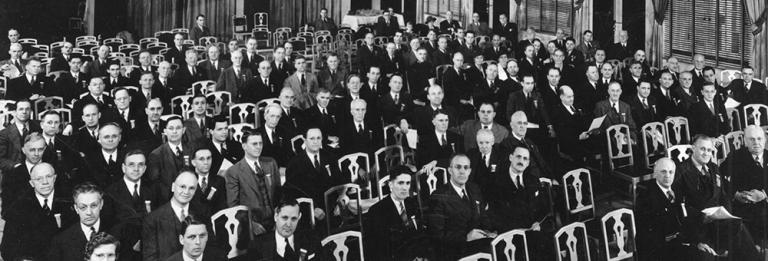Walter Kim boasts an impressive resume. He capped off a history degree from Northwestern University and an M.Div. from Regent College (Vancouver) with a Ph.D. in Near Eastern languages from Harvard University. He has served as senior pastor at Park Street Church in Boston and Trinity Presbyterian Church in Charlottesville.
Last week Kim, 51, was named president of the National Association of Evangelicals (NAE), a venerable organization founded in 1942. Kim, a Korean American who grew up in Appalachia, is the first person of color to lead the NAE.

Kim joins a trickle of other persons of color recently named to top posts at top evangelical institution. Here are a few of the most notable:
- Edgar Sandoval: In 2018 Sandoval, who was born in Los Angeles but grew up in Colombia and Venezuela, was named president of World Vision-U.S. This behemoth relief and development organization operates with a budget of $2.7 billion per year. Before being hired at World Vision, Sandoval did a successful stint as a vice president at Procter & Gamble.
- Tom Lin: In 2016 Lin, a Taiwanese American, was named president of InterVarsity Christian Fellowship. Twenty-five years earlier, he began an Asian American InterVarsity chapter at Harvard, his alma mater. “We’ve got so many men and women, ethnic minorities, who serve in leadership at InterVarsity. We’ve worked at it, and we’ve continued to learn and grow. We never say we’ve arrived, but this is a significant moment for InterVarsity,” the 43-year-old told Christianity Today. “It is significant … for any large North American evangelical organization to have a non-white president.”
- Santiago Mellado: In 2013 Mellado, born in El Salvador and raised in seven different countries, was named president of Compassion International. Before his current post, Mellado was president of the Willow Creek Association and earned degrees in mechanical engineering from Southern Methodist University and business from Harvard.
- Michael Oh: Also in 2013 Oh, an immigrant from South Korea, was named president of the Lausanne Committee for World Evangelization. Oh has a Ph.D. in cultural anthropology and education from the University of Pennsylvania, a master’s degree in East Asian Studies from Harvard, and an M.Div. in missions from Trinity Evangelical Divinity School. Oh has continued to live in Japan, where he served as a missionary, during his tenure as president of Lausanne.
I don’t want to overstate the case here. Kim, Sandoval, Lin, Tizon, and Oh—all men, by the way—comprise a few high-profile cases. That does not make them representative. Moreover, other evangelical sectors do not reflect a transformation of leadership. Of the 140 members of the Council for Christian Colleges and Universities, for example, only one has a president who is a person of color.
That said, these are important changes at significant organizations. And depending how you define evangelicalism—and whether you even acknowledge that such a thing exists—they reflect a new racial composition for this religious group. The latest numbers from Pew show sharply declining identification with Christianity by white Americans, whose share of the population declined from 23 percent of the population in 2006 to fifteen percent of the population in 2017. White Americans no longer enjoy Christian dominance. Indeed, demographer Robert P. Jones interprets support for Trump as a response to losing this demographic ground, as the “death rattle of white Christian America.”
At the same time, Majority World growth has been striking. One out of four Christians in the world lives in Africa, and the Pew Research Center estimates that that number will grow to 40 percent by 2030. Global growth also has had implications for the United States through immigration. Already there are three times more Hispanic Protestants in the United States than Episcopalians. Given this context, the comments of outgoing NAE president Leith Anderson make perfect sense. “The history of the NAE, if you go back 75 years, was less diverse in terms of ethnicity, race and gender,” Anderson said after announcing his retirement in February. “That has been a high priority to better reflect evangelicalism in America. We have made good progress but we are not there yet.”
But is this disingenuous? As one of my Facebook friends rhetorically asked, “When do white institutions put people of color in charge?” Her answer to herself: “When the ship is going down fast and they don’t want to be at the helm when it finally sinks, even though they drove it into the iceberg. For your consideration—the NAE.”

It’s a good point. How many people of color themselves want to claim evangelicalism? Given the NAE’s whitebread history, should it be able to claim people of color? Is the 81 percent number of white evangelicals voting for Trump really a departure from the NAE’s politics, as some have claimed? Or is reactionary populism baked into its very DNA? Even if it has historically stood above the partisan fray—as it seemed to do in its 2004 statement “For the Health of the Nation”—was it really representing its populist constituents, who railed against abortion and same-sex marriage more than anything else?
Kim himself seems to think that the evangelical project is salvageable. “The sheer number of books and articles on evangelicals and evangelicalism reveals that this movement is confronting an identity crisis. Yet, in this crisis there is genuine hope,” he said. “The NAE is uniquely positioned to draw people together, and I am eager to guide this labor. We seek a Spirit-filled renewal that demonstrates a winsome, thoughtful evangelicalism showcasing the truth and beauty of the gospel.”
Whether or not Kim is correct that a recovery of evangelicalism’s better spirits is plausible will be the subject of my next post.













